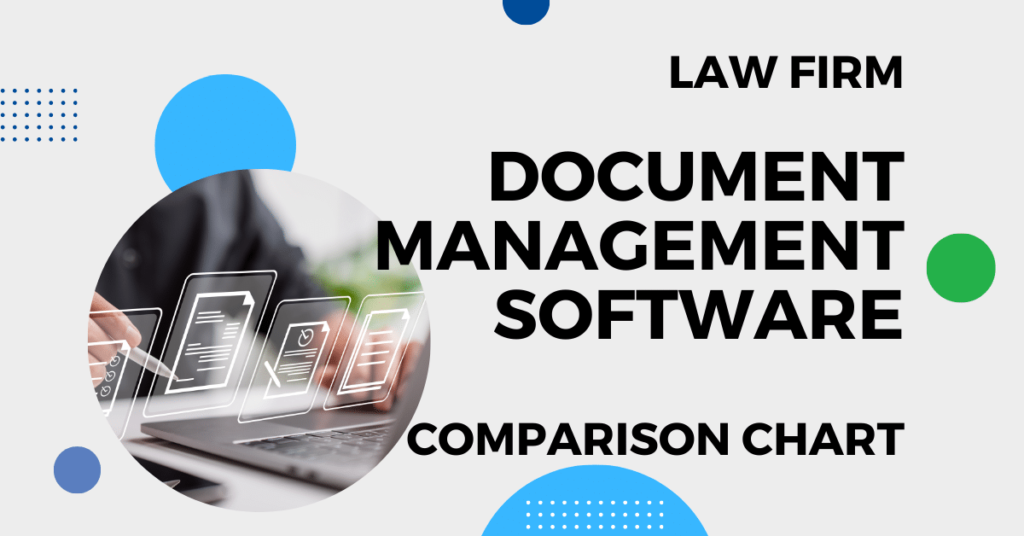Table of Contents

Introduction: Why Document Automation is Essential for Law Firms
Law firms deal with an overwhelming volume of documents daily—contracts, pleadings, legal agreements, correspondence, and more. Handling these documents manually not only consumes valuable time but also increases the risk of errors and inefficiencies.
In an era where clients expect faster, error-free services, the importance of adopting document automation software cannot be overstated. These tools streamline document creation, improve accuracy, and free up valuable time for attorneys to focus on strategic legal work.
This guide dives into the best document automation software for law firms, exploring their features, benefits, and practical applications to help you choose the perfect solution for your practice.
What is Document Automation Software?
Document automation software enables the creation, management, and customization of legal documents through pre-built templates and dynamic data integration. Instead of manually drafting contracts or agreements, lawyers can use these tools to auto-populate fields, standardize formats, and automate workflows.
The Growing Need for Document Automation in Legal Practices
1. Time Management
Attorneys often spend hours on repetitive document drafting tasks. Automation eliminates these inefficiencies, allowing legal professionals to allocate more time to client-facing activities.
2. Error Reduction
Human error is common in manual drafting. Automation ensures consistency by using pre-defined templates, reducing inaccuracies.
3. Enhanced Client Satisfaction
Faster document turnaround times lead to better client experiences, building trust and loyalty.
4. Scalability
As firms grow, so does the complexity of their document management needs. Automation tools scale with your practice, ensuring continued efficiency.
Top Benefits of Document Automation Software
1. Accelerated Document Creation
Generate complex legal documents like contracts, NDAs, and agreements within minutes using dynamic templates.
2. Improved Collaboration
Cloud-based platforms enable teams to work collaboratively on documents, with real-time editing and commenting.
3. Reduced Operational Costs
Automation reduces reliance on extensive administrative support, lowering overhead costs.
4. Seamless Integration
Most automation tools integrate with case management systems, CRMs, and billing software, creating a unified workflow.
5. Compliance and Security
Modern tools adhere to strict compliance standards (like GDPR, HIPAA) and offer robust security features to protect sensitive data.
Key Features of Document Automation Software
1. Dynamic Templates
Templates with dynamic fields allow firms to auto-populate client and case-specific information, ensuring accuracy and uniformity.
2. Data Integration
Seamless integration with third-party tools enables data syncing for streamlined workflows.
3. Clause Libraries
Centralized repositories of frequently used clauses allow for quick insertion into legal documents.
4. Task Automation
Tools that automate approval workflows, task assignments, and deadline tracking ensure faster processing.
5. E-Signature Integration
Enable electronic signing directly within the document, speeding up approvals and reducing physical paperwork.
6. Advanced Reporting
Track document creation timelines, workflow bottlenecks, and user activity to improve operational efficiency.
7. Version Control
Maintain a history of document edits and revert to previous versions if needed.
Top Document Automation Software for Law Firms

1. Xora
Overview: Xora offers an all-in-one solution that combines document automation with case and practice management.
Key Features:
- Intelligent templates for contracts and pleadings.
- Workflow automation for document approval.
- Secure storage and real-time reporting.
Best For: Small to medium-sized firms seeking a cost-effective, versatile solution.
Pricing: Starts at $29/month per user.
2. HotDocs
Overview: A pioneer in document automation, HotDocs is widely used for generating complex legal documents.
Key Features:
- Advanced template creation with conditional logic.
- Integration with leading case management platforms.
- Workflow tracking for document approvals.
Best For: Firms handling high volumes of standardized documents.
Pricing: Custom pricing based on firm size.
3. DocuSign CLM
Overview: DocuSign’s Contract Lifecycle Management (CLM) system combines automation with e-signature capabilities.
Key Features:
- Clause libraries and version tracking.
- Integrated approval workflows.
- Robust reporting and analytics.
Best For: Firms specializing in contracts and agreements.
4. Smokeball
Overview: Smokeball integrates practice management with document automation, making it a great choice for small firms.
Key Features:
- Customizable document templates.
- Integration with email and calendar systems.
- Real-time performance tracking.
Best For: Solo practitioners and small teams.
5. PandaDoc
Overview: PandaDoc simplifies the creation, sharing, and signing of legal documents.
Key Features:
- Pre-designed templates and a drag-and-drop editor.
- E-signature integration.
- Real-time notifications for document updates.
Best For: Firms prioritizing simplicity and ease of use.
Detailed Comparison of Top Tools
| Feature | Xora | HotDocs | DocuSign CLM | Smokeball | PandaDoc |
|---|---|---|---|---|---|
| Template Creation | ✔️ | ✔️ | ✔️ | ✔️ | ✔️ |
| E-Signature | ✔️ | ❌ | ✔️ | ✔️ | ✔️ |
| Workflow Automation | ✔️ | ✔️ | ✔️ | ✔️ | ✔️ |
| Integration | Extensive | Limited | Extensive | Moderate | Moderate |

Use Cases of Document Automation Software
1. Small Law Firms
Automate repetitive document creation tasks, enabling small teams to handle larger caseloads efficiently.
2. Corporate Law Practices
Leverage clause libraries and version control to manage complex contracts and agreements.
3. Litigation Practices
Streamline the generation of pleadings, motions, and other court documents to meet strict deadlines.
4. Remote Teams
Use cloud-based platforms for real-time collaboration and seamless document sharing across locations.
5. High-Volume Practices
Tools like HotDocs are ideal for firms managing standardized documents at scale, such as wills, leases, and NDAs.
Emerging Trends in Document Automation
1. AI-Driven Drafting
AI is transforming document automation by analyzing data to suggest clauses, identify errors, and improve accuracy.
2. Mobile Accessibility
As remote work continues to grow, mobile-friendly platforms are becoming essential for on-the-go document management.
3. Blockchain Integration
Blockchain is being adopted for secure, tamper-proof document storage and compliance tracking.
4. Advanced Collaboration Features
Future tools will include real-time co-authoring and advanced commenting capabilities to improve teamwork.
Case Studies: Real-Life Impact
Case Study 1: Efficiency Gains with Xora
- Challenge: A mid-sized firm struggled with manual drafting and client communication.
- Solution: Xora automated document creation and integrated client portals for real-time updates.
- Outcome: Reduced document turnaround times by 60%.
Case Study 2: HotDocs Streamlines a Corporate Practice
- Challenge: A corporate law firm faced inefficiencies in managing large volumes of contracts.
- Solution: HotDocs standardized templates and automated approval workflows.
- Outcome: Increased productivity by 40%.
How to Choose the Right Software
- Assess Your Needs: Determine the type of documents your firm handles and identify bottlenecks in your current workflow.
- Compare Features: Look for tools that align with your priorities, such as integration capabilities or security features.
- Test Usability: Use free trials or demos to evaluate the tool’s ease of use and functionality.
- Consider Pricing: Balance cost against the features offered to ensure value for money.
Conclusion: Revolutionize Your Legal Practice
Investing in the best document automation software for law firms is no longer optional—it’s essential for staying competitive in the legal industry. Tools like Xora, HotDocs, and DocuSign CLM offer robust features to streamline workflows, reduce errors, and improve client satisfaction.
By adopting the right tool, your firm can handle more cases, meet client expectations, and ensure compliance with minimal effort. Start exploring these solutions today and take your legal practice to the next level.

Leave a Reply